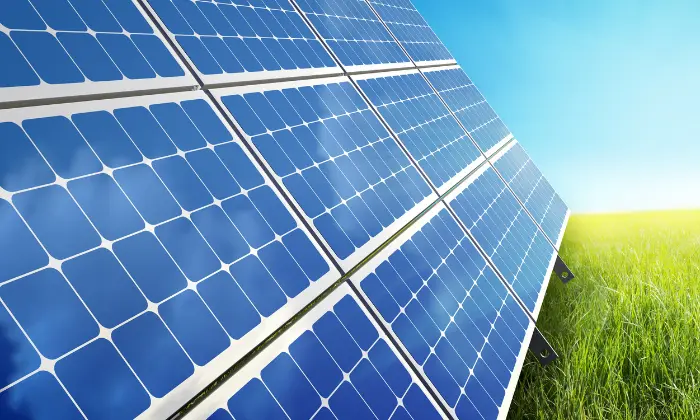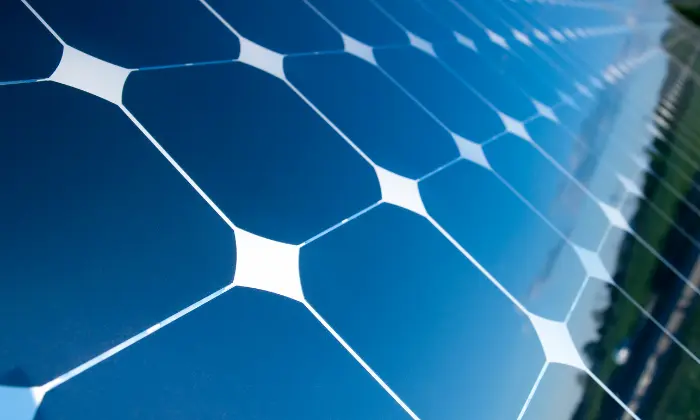Polycrystalline vs Monocrystalline Panels for Commercial Solar
Solar power has become a widely used energy source, transforming how businesses operate. Suppose you’re considering the installation of commercial solar panels. In that case, it’s crucial to thoughtfully assess every aspect of your solar energy system, with particular attention to the choice between monocrystalline and polycrystalline solar panels.
The type of solar panels you choose significantly determines their efficiency, functionality, cost, and durability. Solar panels are designed to capture solar energy for either electricity generation or heat. Photovoltaic solar panels produce electricity, while solar thermal panels generate heat.
Despite being pricier, photovoltaic solar panels, which perform multiple tasks, have consistently outshone thermal solar panels, which primarily heat air or water.
The two primary subcategories within the realm of photovoltaic solar panels are monocrystalline and polycrystalline. Delving into the distinctions between these two types will help you make an informed decision for your solar energy system.
What is a Solar Panel?

Solar panels are divided into two main types thermal and photovoltaic. Solar thermal panels rely on sunlight to generate heat, while photovoltaic (PV) solar panels utilize photovoltaic technology to convert solar energy into electricity.
PV solar panels are well-suited for smaller setups and are the preferred choice for many homeowners. While they may be less efficient than solar thermal panels, their practicality lies in their minimal infrastructure requirements.
Visualizing a solar panel is akin to a picture in a frame – rectangular in shape, encased in a metal frame, and featuring protective front safety glass. A solar panel comprises various layers the critical component is an array of solar cells.
Each solar panel typically houses between 32 and 96 solar cells, arranged side by side to generate an electric output ranging from 230 to 275 watts.
Monocrystalline and polycrystalline solar panels are the two available options. Although more expensive, monocrystalline panels boast higher efficiency in capturing solar energy. On the other hand, polycrystalline panels offer a more cost-effective alternative and can be an excellent choice for locations with ample sunlight.
What is a Monocrystalline Solar Panel?

Monocrystalline solar cells are the building blocks for creating monocrystalline solar panels, commonly known as mono panels. Each solar cell is a silicon crystal meticulously crafted for solar panel applications.
The crystal is shaped into an ingot in a laboratory setting before being sliced into thin discs. The edges of these discs are then cut or sliced, forming octagonal shapes.
The octagonal design of monocrystalline solar panels allows for the optimal arrangement of solar cells when mounted on the panels. This can be likened to using octagonal cookies instead of round ones – the octagonal shape enables fitting a more significant number of cookies on a baking sheet.
Identifiable by their dark color, monocrystalline solar panels typically boast efficiency levels ranging from 15% to 20%. Some recent experimental variations have even achieved efficiencies close to 50%.
Applications of Monocrystalline Solar Panel
Due to their smaller applications, monocrystalline solar panels are employed in areas with reduced sunlight exposure. Despite being more efficient, they are pricier than other solar panel options.
Monocrystalline solar panels stand out for their ability to produce more electricity within a limited space compared to their polycrystalline counterparts. This makes them ideal for locations with space constraints. Even in areas with reduced sunlight, monocrystalline solar panels capture the most energy, making them a perfect choice for those prioritizing efficiency over cost.
Despite their larger size, monocrystalline panels blend more seamlessly into their surroundings due to their dark color, offering a discreet aesthetic. Additionally, they exhibit superior heat tolerance compared to polycrystalline panels, making them a wise and efficient choice, especially in hot climates such as desert regions.
Pros and Cons of Monocrystalline Solar Panel
Pros:
Highly Effective in Generating Energy: Monocrystalline solar panels are known for their high efficiency in converting sunlight into electricity, making them a powerful and reliable energy source.
Space Efficiency: These panels require less space because they seamlessly blend with darker regions or vegetation. This space-saving feature makes them suitable for installations where real estate is limited.
Superior Heat Tolerance: Monocrystalline solar panels exhibit excellent tolerance to heat, making them resilient and reliable even in high-temperature environments. This characteristic ensures consistent energy production in various climates.
Cons:
Non-sustainable Production Techniques: One drawback of monocrystalline solar panels is that their production processes may involve non-sustainable techniques, raising concerns about the environmental impact of manufacturing.
Costly: Monocrystalline solar panels are generally more expensive than other options. The initial upfront cost can be a limiting factor for some individuals or businesses, impacting the overall affordability of the solar energy system.
What is a Polycrystalline Solar Panel?
Polycrystalline solar panels, also known as poly panels, are crafted from individual polycrystalline solar cells made of silicon crystals, similar to their monocrystalline counterparts. However, a key distinction lies in their production process. In the case of polycrystalline cells, the silicon crystal cools and naturally breaks apart, forming multiple pieces. These fragments are then melted, creating cubes further divided into thin wafers.
Unlike monocrystalline panels with a single crystal structure, polycrystalline panels comprise various crystals amalgam. This characteristic streamlines the manufacturing process, allowing for the production of more solar cells at a faster pace and a lower cost compared to monocrystalline cells.
The resulting blue square polycrystalline cells are neatly stacked without gaps. However, they exhibit lower efficiency than monocrystalline panels due to the increased complexity and less space for electron movement in polycrystalline solar panels. Typically, polycrystalline solar panels have an efficiency rating ranging from 13% to 16%, a difference that may seem modest for individual panels but can accumulate significantly when considering multiple solar panels.
Pros and Cons of Polycrystalline Solar Panel
Pros:
Cost-Effective: Polycrystalline solar panels are generally more affordable than their monocrystalline counterparts, making them a cost-effective choice for those seeking a budget-friendly solar energy solution.
Comparable Lifespan: Although more economical, polycrystalline solar panels offer a comparable lifespan to monocrystalline panels. Users can benefit from a reliable and durable energy source without compromising longevity.
Cons:
Increased Space Requirement and Less Sustainable Energy Production: Polycrystalline solar panels generally require more space for installation and may involve less sustainable energy production methods, raising concerns about their environmental impact.
Prominent Blue Color: The distinctive blue color of polycrystalline panels is more noticeable than the darker hue of monocrystalline panels. This aesthetic difference may be a consideration for those seeking a more discreet solar installation.
Reduced Heat Tolerance: Polycrystalline solar panels exhibit less tolerance to heat, making them potentially less suitable for environments with high temperatures, such as desert regions. This reduced heat tolerance can affect the overall performance and efficiency of the panels in warm climates.
Applications of Polycrystalline Solar Panel
- Preferable for larger regions
- Suitable for areas with more sunlight
- Useful when looks are not the most important thing
- Affordable
If you reside in a location with ample sunlight and aim to purchase solar panels on a budget, choosing polycrystalline solar panels is a practical option. These panels offer a cost-effective solution compared to the typically more expensive monocrystalline panels. Given sufficient space for installation, polycrystalline units become a favorable choice, delivering better performance in regions with abundant sunlight despite their lower output.
Polycrystalline vs monocrystalline: Which Is Better?
The purpose of monocrystalline and polycrystalline panels in a solar system is the same to convert solar energy into electricity. The underlying science is straightforward, with both types utilizing silicon, an abundantly available element in the Earth’s crust.
Various companies manufacture monocrystalline and polycrystalline solar panels, offering businesses diverse options. However, there are key distinctions to be aware of before finalizing a solar purchasing decision.
The critical difference lies in the type of silicon solar cell each technology employs. Monocrystalline panels utilize silicon solar cells made from a single crystal (mono-silicon crystal), whereas polycrystalline panels use cells crafted from numerous silicon fragments that have been melted together.
Ultimately, the decision comes down to specific statistics.
Here are some major comparisons between monocrystalline and polycrystalline solar panels.
Cost:
Most of the time, monocrystalline solar panels cost more than polycrystalline panels. The price difference is primarily influenced by the silicon structure used in each type.
The manufacturing process for polycrystalline panels involves pouring molten silicon into square molds and then separating the resulting wafers. In contrast, monocrystalline panels require a more controlled solidification process, making their production more complex and costly.
While monocrystalline panels have higher upfront costs, both types share similar expenses for wiring, inverters, racking, electrical safety measures, and labor.
Consideration for limited space: Monocrystalline panels may offer a better return on investment due to their higher efficiency, mainly when space is a constraint for commercial solar installations.
Efficiency:
Monocrystalline solar panels, made from a single silicon crystal, generally exhibit higher efficiency than polycrystalline panels.
Monocrystalline panels can achieve efficiencies of over 23%, surpassing the typical maximum efficiency of around 20% for polycrystalline panels.
Aesthetics:
Monocrystalline solar panels are typically black, while polycrystalline panels may appear to have a blue tint. This difference in color represents the fundamental aesthetic contrast between the two types.
Lifespan:
The lifespan of solar panels, whether monocrystalline or polycrystalline, is generally consistent. Both types can efficiently produce power for at least 25 years.
Temperature Coefficient:
Monocrystalline solar panels often outperform polycrystalline panels in terms of temperature coefficient. A lower temperature coefficient indicates better performance in high temperatures, with monocrystalline panels exhibiting enhanced efficiency in warmer conditions.
Turn to Solar Earth Inc. for Your Commercial Solar Solutions
In summary, when considering solar panel options, the choice between monocrystalline and polycrystalline depends on your specific needs and preferences.
Polycrystalline Solar Panels:
Ideal for those with a limited budget but ample space for panel installation.
It can be beneficial in certain circumstances, offering a cost-effective solution.
Less efficient than monocrystalline panels but suitable if space is not a constraint.
Monocrystalline Solar Panels:
Recommended for those prioritizing efficiency and willing to invest more.
Generally more efficient and perform better in higher temperatures.
A good choice for those seeking a higher return on investment over the long term.
Choosing between these two types of solar panels depends on your budget, space availability, and efficiency requirements. For more detailed information tailored to your commercial solar project, contact Solar Earth Inc. We’re here to provide the guidance you need for a successful solar installation.
Contact your local solar provider today!
Solar Earth Inc., with expertise and certifications, empowers your home for enhanced energy generation. Contact us today to transform your home into a sustainable, long-term renewable energy source.
